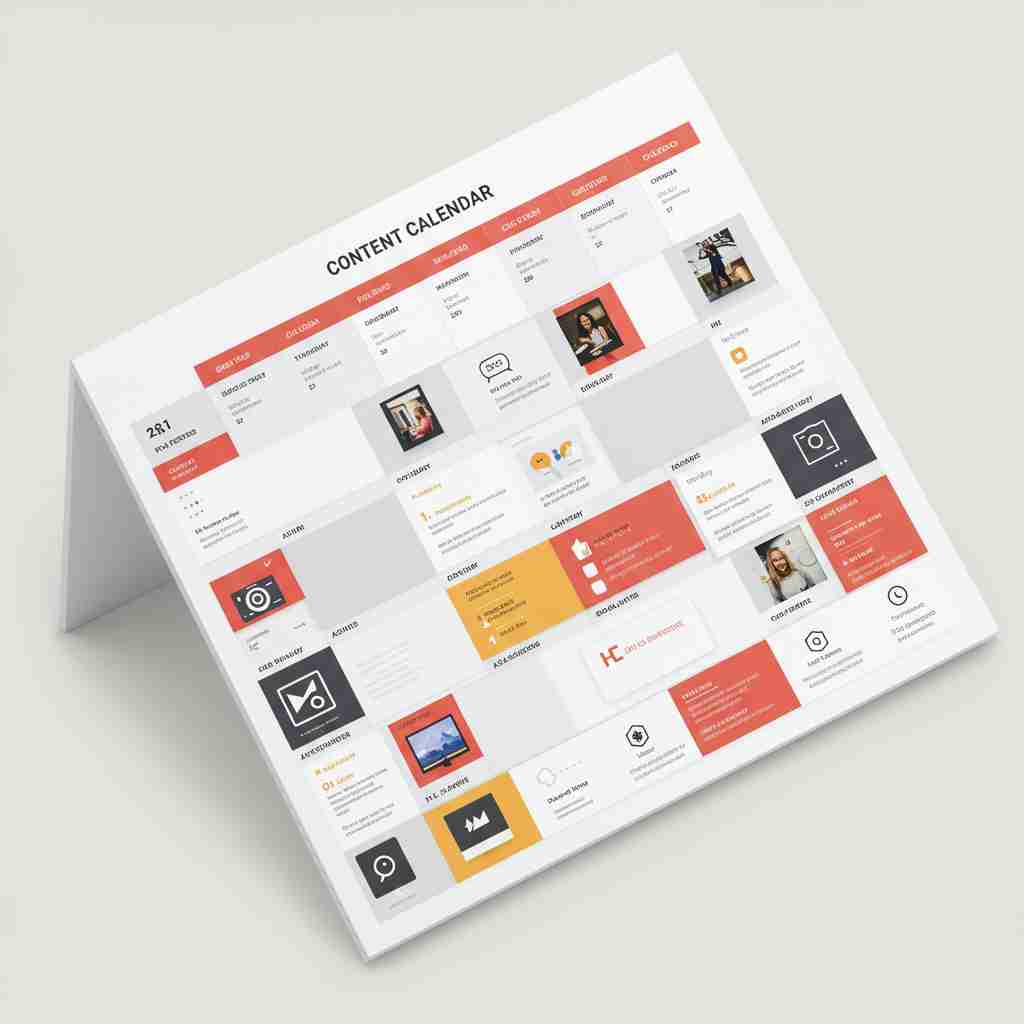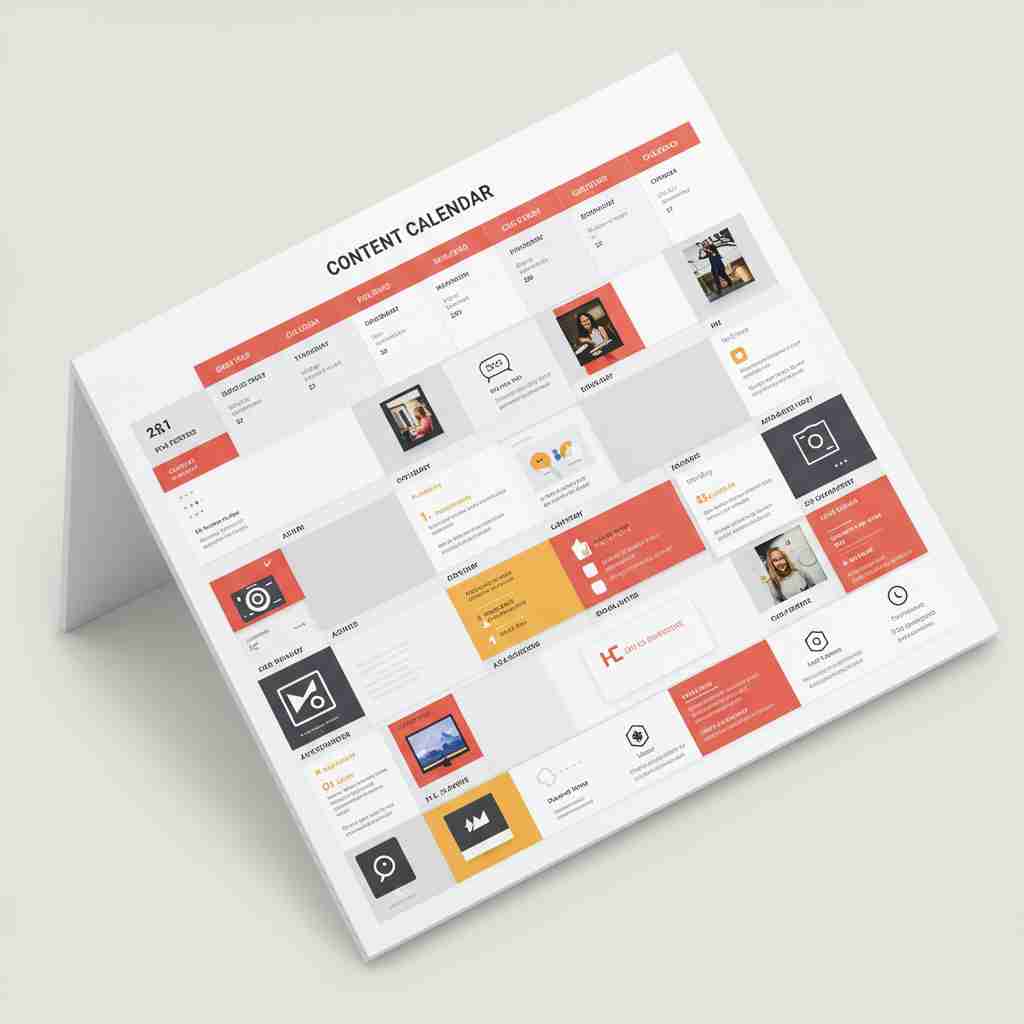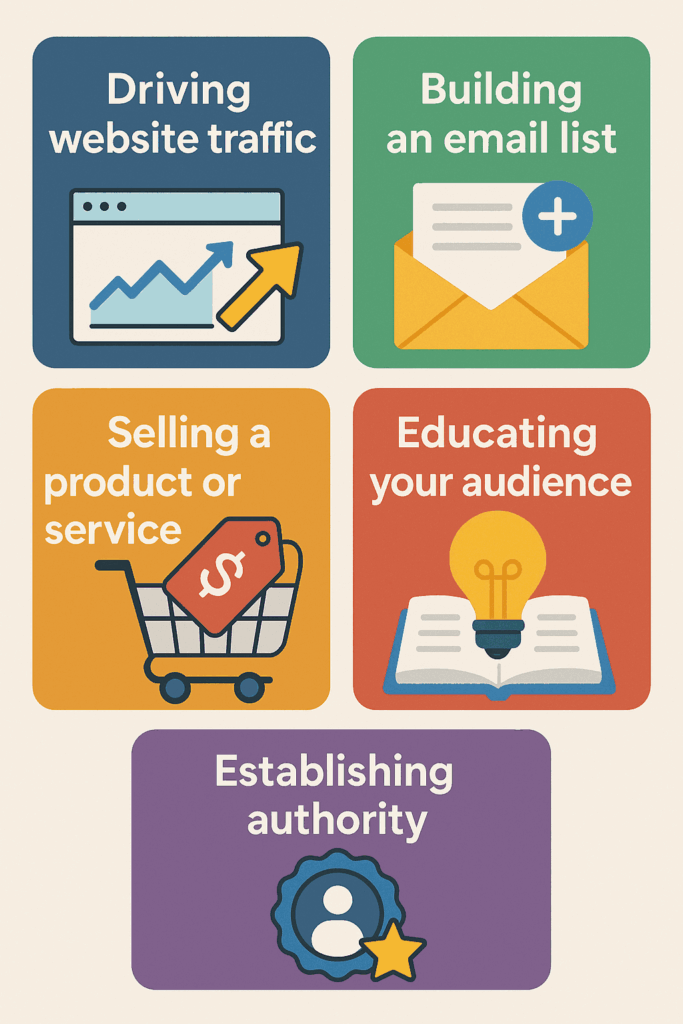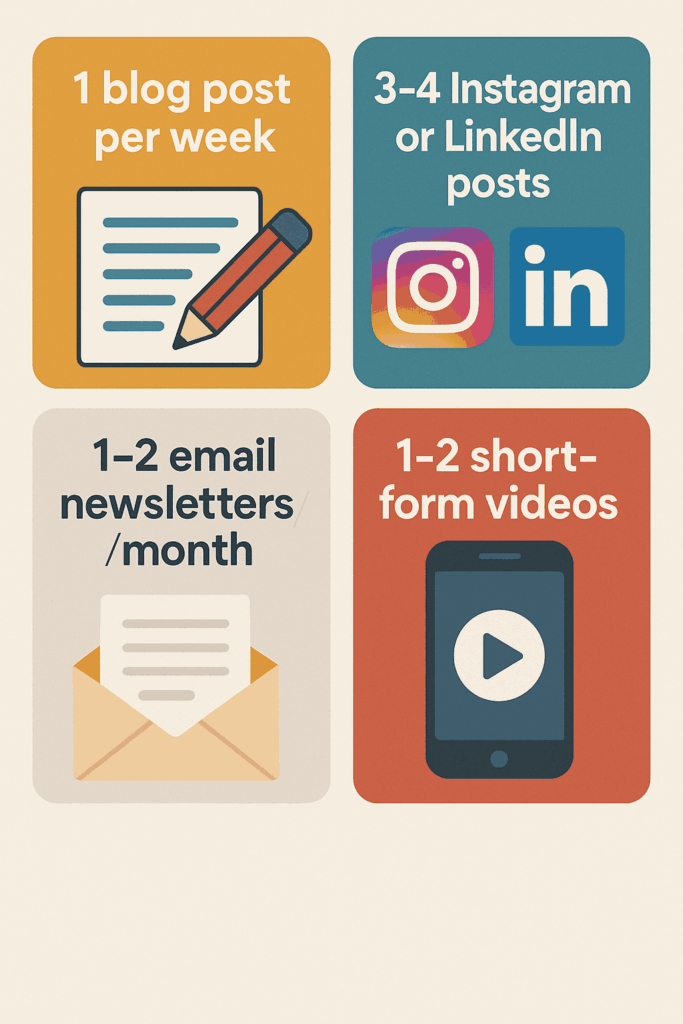Physical Address
304 North Cardinal St.
Dorchester Center, MA 02124
Physical Address
304 North Cardinal St.
Dorchester Center, MA 02124


Learn how to create a content calendar to simplify planning, stay consistent, and grow your business with ease using smart strategies and free tools.
Creating content on the fly might feel spontaneous (and a little thrilling), but it often leads to inconsistency, burnout, and zero results. If you’re a small business owner, solopreneur, or creator trying to grow online, the secret to showing up consistently without stress is simple: learn how to create a content calendar.
This one tool can completely transform how you show up online, helping you plan ahead, stay organized, and market your business with intention. In this guide, we’ll break down exactly how to create a content calendar that’s easy, effective, and totally doable even if you’re juggling a million things.
Let’s start with the basics. A content calendar is a visual plan that maps out what content you’ll publish, when, and on what platform. It could be as simple as a spreadsheet or as advanced as a Notion dashboard or AI-powered tool.
| Benefit | Description |
|---|---|
| Keeps you consistent | Even on busy weeks, you maintain a steady posting schedule. |
| Reduces stress | No more daily panic about what to post. |
| Saves time | Plan content in batches instead of day by day. |
| Boosts engagement | Aligns with key dates, trends, and audience interests. |
| Keeps your content goal-focused | Helps avoid random, unplanned posting. |
Think of it like GPS for your marketing. You know where you’re going, and you’re not guessing with every step.
Whether you’re just starting or trying to get more strategic, follow these practical steps to build a calendar that works for your business.
Before you write anything, ask: What am I trying to achieve with my content?
Your content should be tied to real goals, like:

💡 Example:
If your goal is to grow your email list, include 1–2 lead magnet promos per week in your calendar.
No, you don’t have to be on every platform. Choose 2–3 that make the most sense for your business and audience.
Here’s a quick cheat sheet:
| Platform | Best For |
|---|---|
| Visual products, behind-the-scenes, reels | |
| B2B, thought leadership, testimonials | |
| TikTok | Personal brand, storytelling, virality |
| Blog | SEO, evergreen content, deep-dive education |
| YouTube | Tutorials, reviews, long-form content |
Pro Tip: Repurpose content across platforms. One blog post can become 5 social posts + 1 newsletter + 1 video.
Content pillars are the core themes you consistently talk about. These give your calendar structure and ensure you’re not repeating the same message over and over.
For example, if you’re a marketing coach, your pillars could be:
Use these pillars to brainstorm content ideas for each week.
Quality > quantity. It’s better to post 3 great pieces of content a week than 7 rushed ones.
Start with what’s sustainable. Here’s a realistic starter schedule:

💡 Use AI tools like ChatGPT, Copy.ai, or Lately.ai to speed up content creation while maintaining quality.
Open up your calendar (Google Sheets, Notion, Airtable, Trello — whatever works), and start slotting in ideas by week.
Here’s what a simple weekly content calendar might look like:
| Day | Platform | Content Type | Topic |
|---|---|---|---|
| Monday | Blog | How-to | How to create a content calendar |
| Tuesday | Carousel | 5 tools I use to plan content | |
| Wednesday | TikTok | Video | My 3-step content batching system |
| Thursday | Newsletter | July content toolkit + free template | |
| Friday | Thought leadership | Why solopreneurs need content strategy |
Batch your content creation days to streamline e.g., write all captions on Monday, schedule everything Tuesday.
Here are some handy tools to make calendar planning a breeze:
Pro Tip: Use color-coding in your calendar for content types (e.g., blue for blogs, green for promos, yellow for video content)
At the end of each month, review what worked and what didn’t:
Want to skip the setup and start planning today?
👉 Grab this free content calendar template (Google Sheets)
It includes:
Creating content doesn’t have to be chaotic, inconsistent, or last-minute. When you learn how to create a content calendar, you’re not just organizing posts you’re creating a strategy that builds trust, engagement, and results over time.
✨ Want more done-for-you resources?
Check out our Free AI-Powered Marketing Toolkit with templates, swipe files, and more to help you build a system that scales.